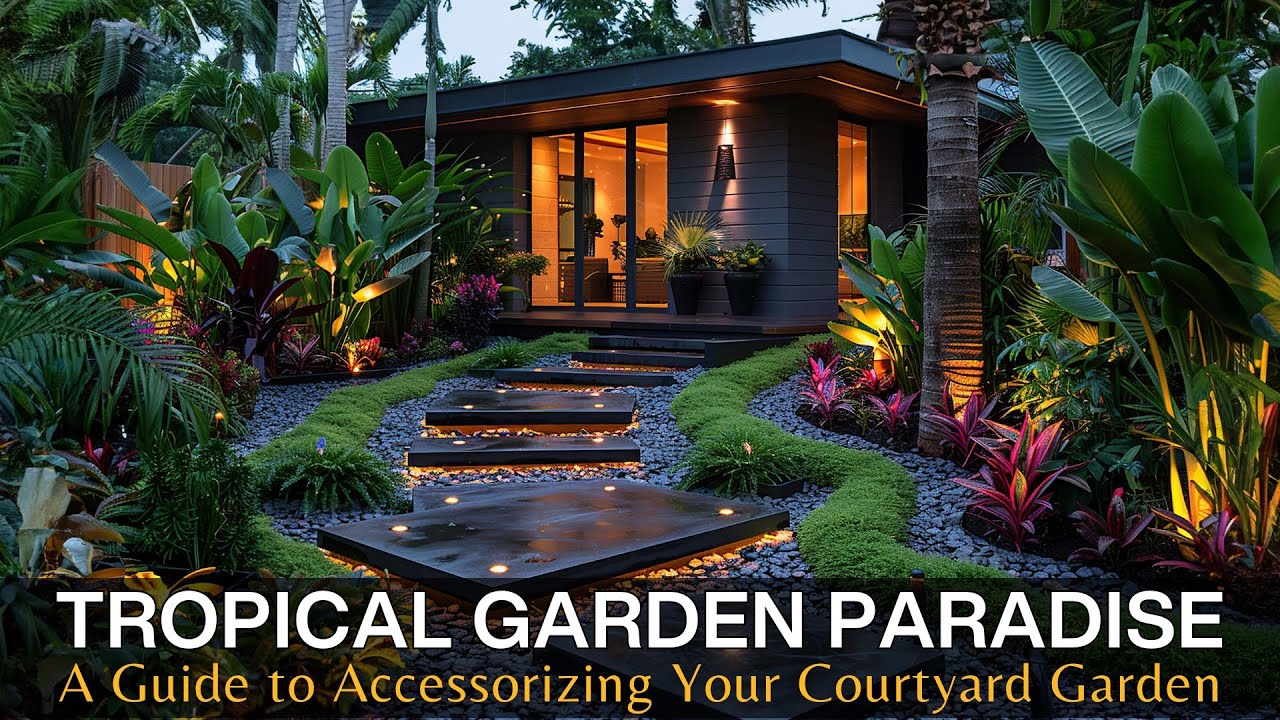Introduction
Creating a tropical garden brings the lush, vibrant beauty of the tropics right to your doorstep. Whether you live in a warm climate or want to simulate a tropical paradise elsewhere, a well-designed tropical garden offers a serene retreat filled with exotic plants, bold colors, and rich textures. This guide covers everything you need to know to make a tropical garden that thrives, including plant selection, soil preparation, garden design, and maintenance tips. By following expert advice and practical steps, you can transform any outdoor space into a captivating tropical oasis.
Understanding the Basics of a Tropical Garden
What Defines a Tropical Garden?
A tropical garden mimics the natural environment found in tropical regions, characterized by warm temperatures, high humidity, and frequent rainfall. Key features include:
- Lush foliage with large, broad leaves
- Bright, vibrant flowers
- Dense planting to create a layered, jungle-like effect
- Use of water features and natural elements like rocks and wood
This style focuses on creating an immersive experience that feels wild yet harmonious.
Climate Considerations
Tropical plants generally prefer USDA Zones 9-11, but many species can adapt with proper care. If you live in cooler areas, consider container gardening or greenhouses.
Tip: Research local climate conditions and select hardy tropical plants or microclimates within your garden that can support tropical species.
Selecting the Right Plants for Your Tropical Garden
Essential Tropical Plants
To capture the true essence of a tropical garden, incorporate plants like:
- Bird of Paradise (Strelitzia reginae): Known for its striking orange and blue flowers.
- Banana Plants (Musa spp.): Adds height and large, dramatic leaves.
- Heliconia: Brightly colored, exotic flowers that attract hummingbirds.
- Ferns and Palms: Provide lush, green backdrops and texture.
- Ginger Plants (Alpinia): Adds color and scent.
Soil and Fertilization
Tropical plants thrive in rich, well-draining soil with plenty of organic matter. Amend your soil with compost or aged manure to improve fertility.
Use balanced, slow-release fertilizers tailored for tropical species to encourage vigorous growth.
Designing Your Tropical Garden Layout
Creating Layers
Use a layered planting approach to mimic natural tropical forests:
- Canopy Layer: Tall palms and banana plants.
- Understory Layer: Medium-sized shrubs like hibiscus.
- Ground Layer: Ferns, ground covers, and colorful foliage plants.
Incorporate Water Elements
Water features such as small ponds, waterfalls, or birdbaths enhance humidity and create soothing sounds, essential for a tropical ambiance.
Pathways and Seating
Design winding paths with natural materials like stone or wood to invite exploration. Add seating areas shaded by large leaves for relaxation.
Maintenance Tips for a Thriving Tropical Garden
Watering and Humidity
Tropical plants need consistent moisture but dislike waterlogged roots. Use drip irrigation or soaker hoses to maintain steady soil moisture.
Increase humidity by misting plants regularly or placing water trays nearby.
Pest and Disease Management
Keep an eye out for common tropical pests such as spider mites and aphids. Use organic insecticides and encourage beneficial insects like ladybugs.
Prune diseased or damaged foliage promptly to prevent spread.
Seasonal Care
Protect sensitive plants from cold snaps with frost cloths or move potted plants indoors during winter.
Regularly fertilize during the growing season to support continuous blooming and foliage development.
Real-World Examples and Expert Insights
Landscape architect Maria Lopez notes, “Layering plants and incorporating water elements not only creates a visually stunning garden but also supports a micro-ecosystem that keeps plants healthy.”
A case study from Hawaii’s botanical gardens shows that native tropical plants combined with non-invasive exotics create sustainable, low-maintenance gardens that conserve water and reduce pests.
Conclusion
Making a tropical garden is a rewarding project that transforms your outdoor space into a vibrant, lush retreat. By choosing the right plants, designing with layers and natural elements, and maintaining consistent care, you can enjoy a thriving tropical paradise year-round. Start small, experiment with different species, and watch your garden flourish. Embrace the tropical spirit and turn your garden into a personal oasis that brings joy and relaxation every day.
